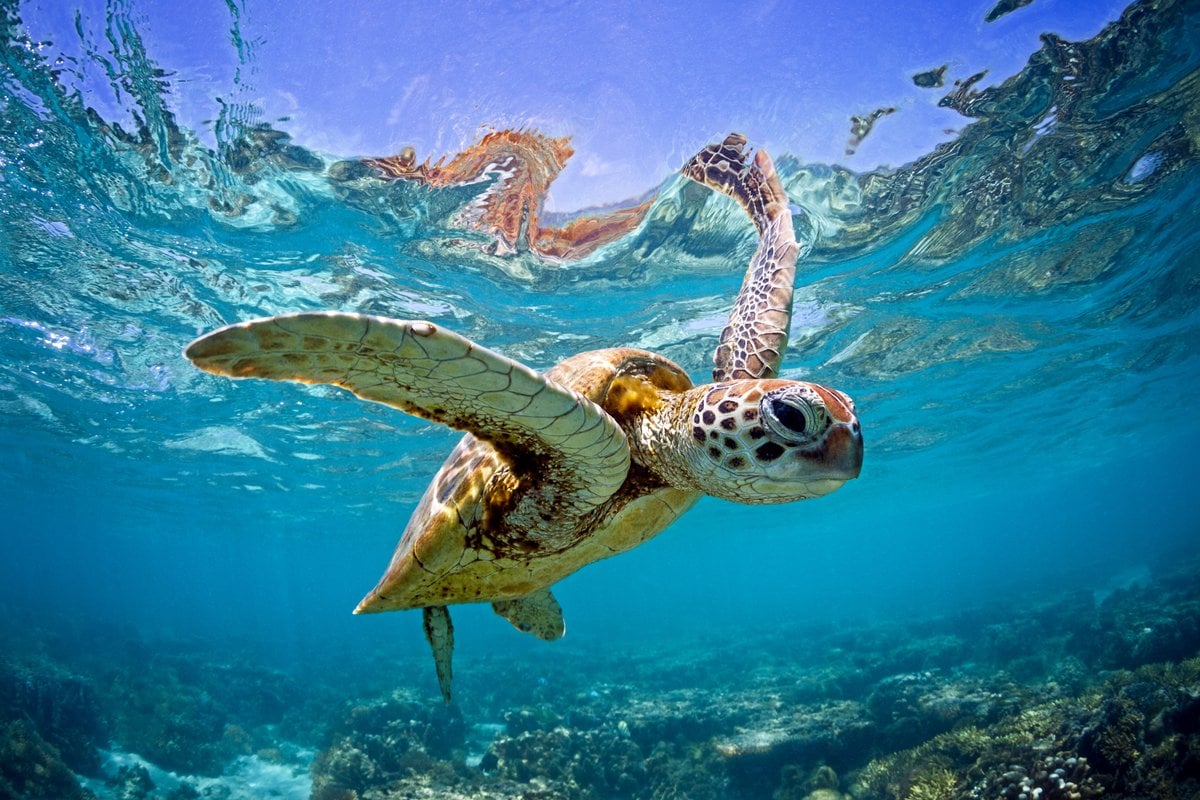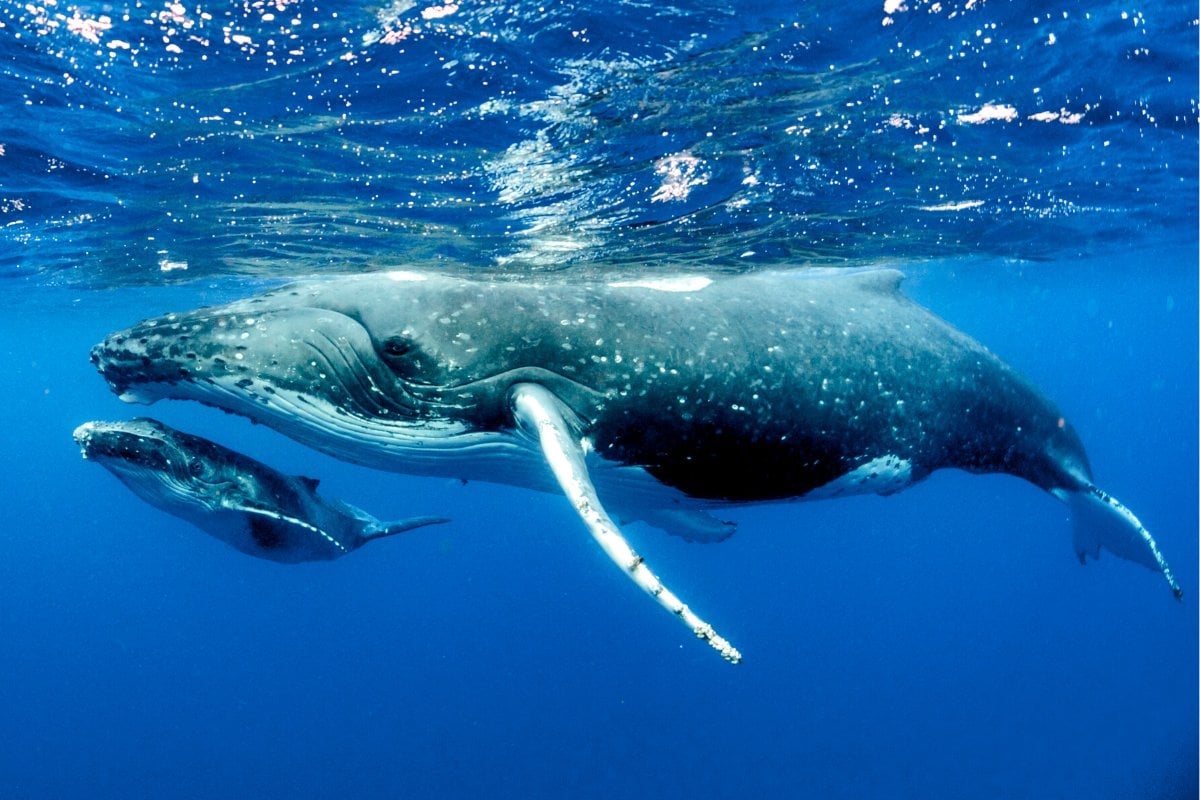
All of us have a deep love and appreciation for the world's animals.
Think of all the species of sea turtles in the Great Barrier Reef, the herds of elephants, giraffes and lions crossing the plains of Africa, the beautiful whales migrating through our oceans, or the shoals of salmon. Even the stunning Monarch butterflies and flocks and flocks of various birds.
The mass migration of these creatures is what makes the natural world such a marvel — and many of us have fallen in love with watching it happen thanks to documentaries by the likes of David Attenborough.
But in our lifetimes, there's an extremely high chance of all this beauty disappearing.
The first ever State of the World's Migratory Species report is out, courtesy of the UN's Convention on the Conservation of Migratory Species of Wild Animals.
Sadly, it paints a bleak picture for Earth's migratory wildlife.
Watch: the sweet moment albino turtles hatch on Queensland's Castaways Beach. Post continues below.
One in five migratory species are threatened with pending extinction, and then 44 per cent have a decreasing population trend.
The threat of extinction is being caused by a variety of factors, including the destruction of habitats, overexploitation through catching, hunting and trade in these species, and pollution that affects these species' health and ability to reproduce.

